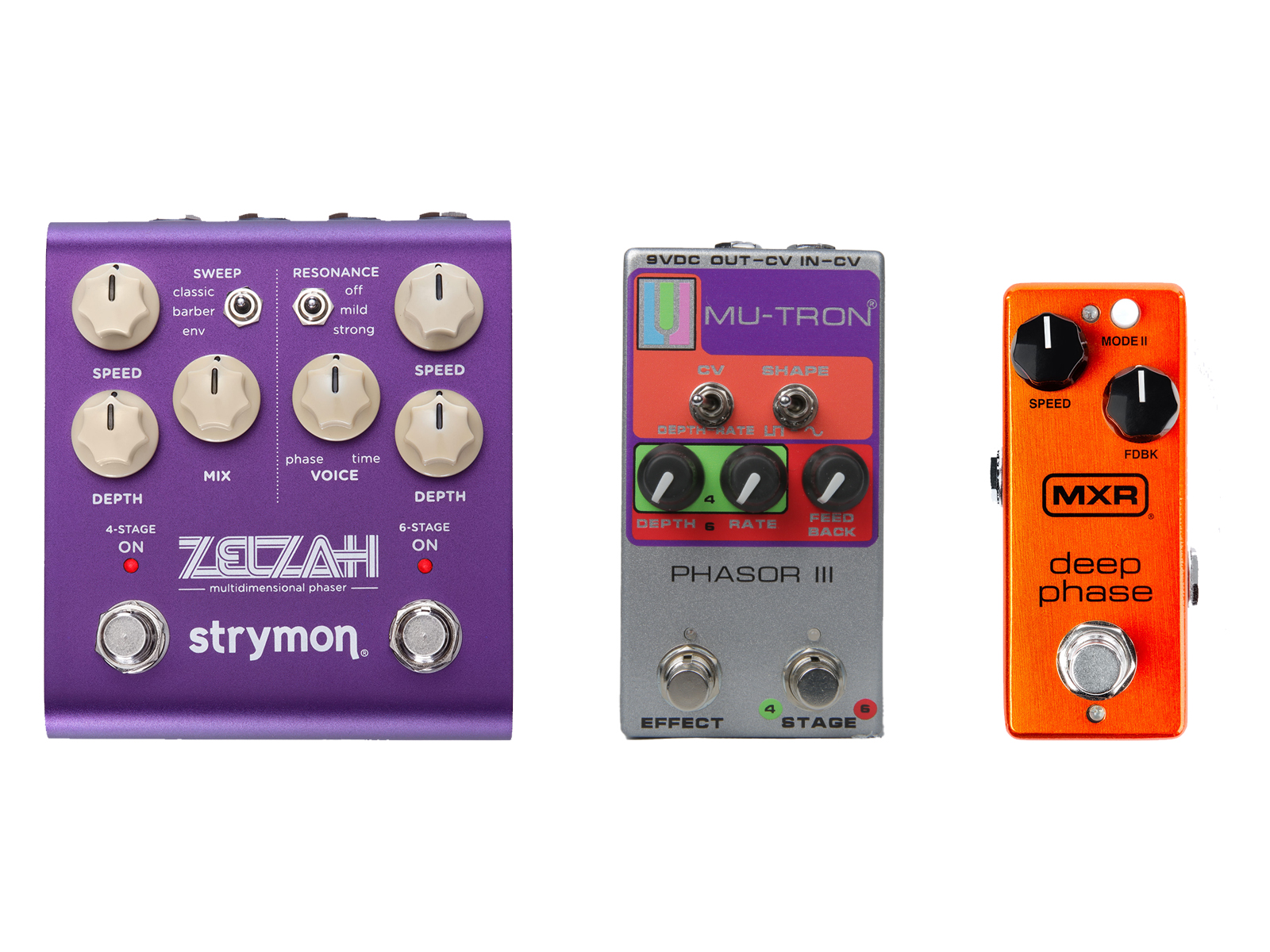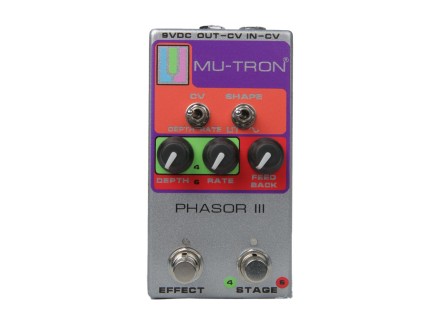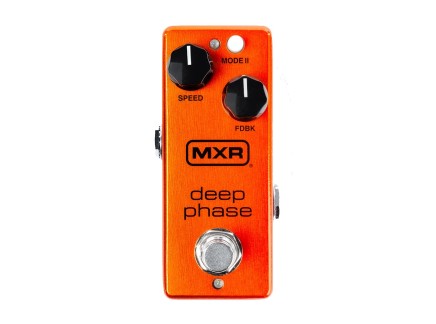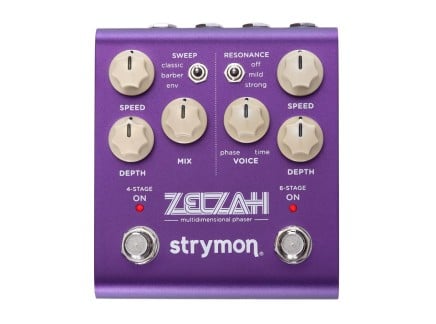Let's look a little closer at three of our favorite phaser pedals, Strymon's Zelzah, Mu-tron's Phasor III, and MXR's Deep Phase. First, what is a phaser anyway? A phaser is a series of all-pass filters, called stages, that are slightly out of phase with each other and modulated with an LFO typically controlled by a Rate knob. The actual effect comes from these filters' phase offsets gradually changing under influence of the LFO—creating a sweeping sound that emphasizes different parts of the audio spectrum as it evolves, leaving us with a nice bit of movement that sounds like a subtle and constant filter sweep. Many phaser effects have a feedback control that lets you feed the all-pass output back into the input for more extreme resonances, as well as other controls that let you fine tune the sound.
The differences between phasers is similar to differences between filter modules or distortion pedals: ostensibly they do the same thing, but achieve it in different ways. Subtleties end up being what makes or breaks a signal-coloring device, and your personal preference is what matters. In our case, we're looking at three excellent phaser pedals that are all at different price points—each with similar features and an all-around great sound. And while these pedals stretch a fair bit across the price spectrum, they do all have a unique sonic character and a wide range of applications. So what makes them different, and how might you use each?
Setting the Stage
All of these pedals have two selectable options for the number of phasing stages: the more stages, the more extreme of an effect. Both the Deep Phase and Phasor III give you a switch to let you choose between the two, however, the Zelzah gives you simultaneous access to both. The Zelzah is also the only one of the three that is available in a stereo configuration as well, capable of separating the 4-stage and 6-stage phasers to different sides, letting you create a great stereo space. Being the most expensive of the three, it also has a bunch of incredible features, like the endlessly climbing Barbershop setting which has movement similar to a Shepard tone, MIDI control, flanger effects, and even more stereo panning options—be sure to check out our recent article about Strymon's Zelzah for a deeper look at everything it can do.

Neither the Phasor III nor the Deep Phase, however, should be overlooked—because they are each incredible in their own right. The Deep Phase is compact and uses a circuit based on the classic Phase 90. With similarly austere controls, the Deep Phase doesn't bother with extras, just a rate and feedback control with an option for 4 or 8 phasing stages. This is the only phaser of the three that allows for 8 stages, letting you dial in extreme settings with ease. This is great for adding a classic phaser effect, and it can get up to near audio-rate for wild modulation.
Mu-tron's Phasor III, though, is a step up from the Deep Phase: with a few additional features, as well as Mu-tron's legendary optical circuitry for a lush analog feel. The LFO features an option for sine or square wave modulation, allowing for smooth, continuous spectral shifts in sine mode and more percussive, abrupt sounds when set to square. A CV input can control the Rate or Depth, making dynamic rotary cabinet sounds possible...and making it an excellent pairing with desktop semi-modular synths or Eurorack gear. The Phasor III also features selectable 4 and 6 stage operation with a feedback knob for the 6-stage operation. Perfect for warm subtleties and dripping, glistening ambiences, this is great if you want more experimentation…and it sounds great after a distortion or overdrive.
Phasers are a great addition to any signal chain because of their ability to be subtle, extreme, or anywhere in between. When crafting a sound, it's often the little things that make a difference, and the movement offered from a phaser can transform a nice pad into an epic environment, or a good lead line into a rich, expressive flourish. Any of these are great choices and all of them can add a little spice to your mix no matter what instrument you play.










